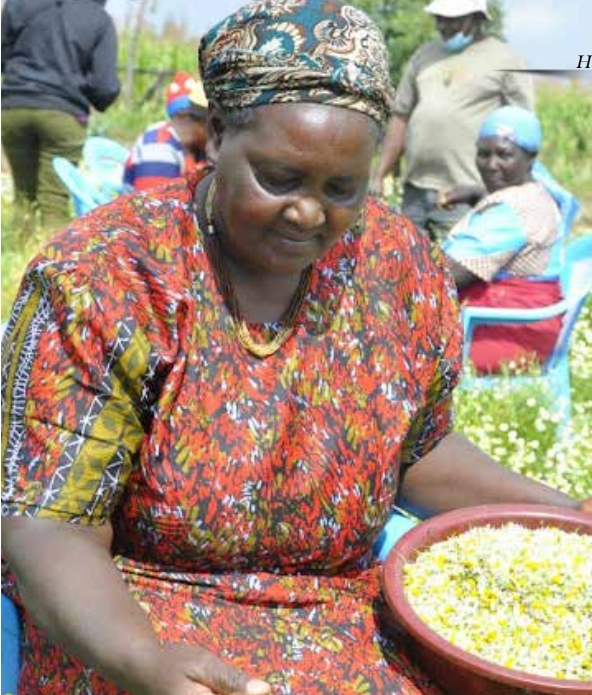
Nyandarua Farmers Embrace Chamomile Herb Farming
A decade now, Mr Elijah Kimani from Kipipili Constituency, Nyandarua County has no intention of diverting from chamomile herbs farming
For nearly a decade now, Mr Elijah Kimani from Kipipili Constituency, Nyandarua County has known no other agribusiness, and he has no intention of diverting from chamomile herbs farming, a rewarding venture he truly cherishes.
He has specialized in Chamomile herbs farming, some shrubby plants with white and yellowish flowers decorating his three-acre farm. He ventured into herbs farming in 2015 after constant failures hawking in Eldoret town, a decision he doesn’t regret today.
The farmer started with Coriander farming in 2016 on the one-acre farm before shifting to more rewarding Chamomile herbs. Mr Kimani came across the herb in Nyahururu town when selling coriander at the open-air market, got motivated, and resolved to go Chamomile.
“Most of the customers who bought the herbs were Asians and few Africans. I felt the farmer was making better money selling the herbs than my coriander. I bought some seeds which I planted at my farm, they performed very well,” explained the farmer.
With time, he got a direct market for the herbs, selling directly to customers in Nakuru, Nairobi, and other parts of the country, almost doing contract farming. Chamomile seeds are first planted at the seedbed where they take three days to germinate before they are transplanted to the garden.
To plant an acre of Chamomile, a farmer requires about a spoon of the seeds which are more of dust, planted in a seedbed to germinate in three days. At the seedbed, he advises farmers to mix the one-spoon seeds with a 2kg container of manure for easy planting.

A month later, with regular watering, the seedlings will be ready for transplanting on a well-prepared farm with adequate watering. Topdressing fertilizer is applied at a rate of 50 kilos per acre when the plants are two to three weeks old after transplant, and the crop will require no more inputs until the last harvest.
Spacing at planting is one and a half feet between plants and two feet between rows but the spacing can be increased if the farm is very fertile to allow enough room for the shrubby plants to develop. Mr Kimani described the crop as very delicate and the top dressing fertilizer should not come into contact with the stem, applied at least three inches from the stem.
Two weeks after application of the top-dressing fertilizer, the plant will have developed some branches but the shots must be cut to make it develop healthier branches. He explains that the more branches a plant has, the more the yield, and, the crop is disease and pests-tolerant.
“Flowering comes two months after transplanting, but they should not be harvested this early stage, the flowers should be given some more time for the yellow color to fully develop, which also means more weight,” said the farmer.
The biggest labor is harvesting and the laborers must be trained in plucking, a process similar to pyrethrum harvesting where only mature flowers are harvested and then dried for the market.
He says the flowers are harvested eight times before the plant withers at intervals of three weeks between harvests.
Every three weeks, Mr Kimani harvests between 150 kilos and 250 of the flowers to sell a kilo at between Sh1000 and Sh1500 depending on season and market trends in Nairobi, Nakuru, and other towns. Other customers are herbalists buying directly from the farm, says the farmer.
“Chamomile can fetch better export markets but I am a small-scale farmer, I can’t meet the export demand, I am currently recruiting more farmers but as usual, most farmers are adamant about embracing new crops. I have also refused to give them seeds for free since most people never get serious when given things for free. I am selling a spoon of the seeds at Sh3, 000 which is more than enough for one acre,” said the farmer.

